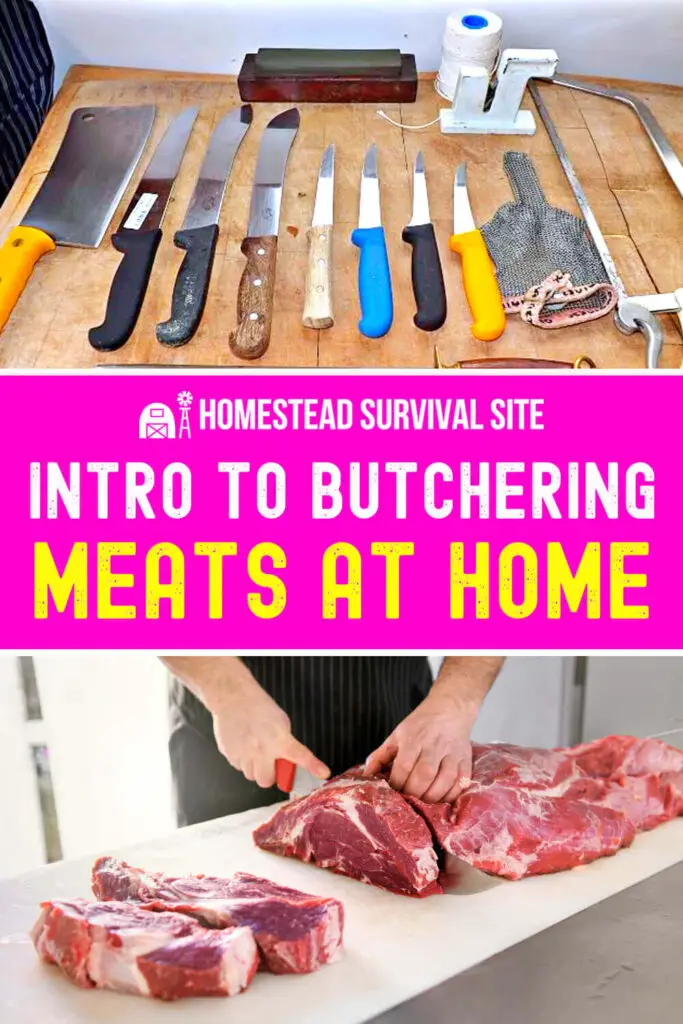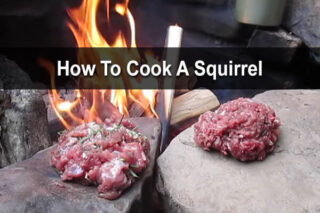Estimated reading time: 9 minutes
Even before the events of 2020 many people have been looking for a more rural life that exists outside the boundaries of busy cities or even bustling towns. Planting the seeds of a small rural homestead with some animals, gardens and solar panels seems to be the answer to the ever-growing divisions in our nation and the looming threat profile.
Of course, homesteading and raising animals comes with another set of challenges. The hard truth most of us do not want to face is that any life worth living is marred by challenges and disruptions.
One such challenge is the butchering of animals, should you decide to raise them for meat. Of course, you can send them off to a slaughterhouse but knowing how to break animals down into FOOD is a very important skill that everyone should know.
This article will be an intro to butchering meat at home. We will talk about everything from the tools and preparation to the anatomy and storage of butchered meats. This will in no way be a substitute for the actual experience of butchering, but it will ensure you have everything you need to give it a go on your own.
Want to save this post for later? Click Here to Pin It On Pinterest!
The Importance of Knives and Edged Tools
The real difference maker when butchering any kind of animal are your edged tools. Your knives, saws, and even shears are important to the process. They should be razor sharp, clean, and close by. Let’s talk about the use of each.
Boning Knife

The most important knife for butchering is the boning knife. This thin bladed knife should have a sturdy handle and a little curved point at the end. For some animals you can get everything done with a knife like this. Though it helps to have others. This knife is great for making cuts through muscle but also great for removing sinew, too.
This is also the knife I use for gutting an animal. Which will be more part of the slaughtering process but is a very important tool.
Cleaver

Getting through joints or dealing with smaller bones can require a blade with some heft. A cleaver is a great option for this kind of work.
Chef’s Knife

The chef’s knife can be very effective when you are breaking down larger primal cuts of meat. The blade is wider and slices more efficiently through larger cuts of meat. It can also be great for removing skin in large pieces.
I also prefer the chef’s knife when slicing a tenderloin into medallions or larger cuts into steaks.
Bone Saw
Sometimes you must cut through bones, and a bone saw is a great option for that.
Pruning Shears
You will have to try it to believe it, but a pair of large sharp pruning shears can make quick work of pig, sheep, and lamb bones. I wouldn’t start any butchering day without a pair of nice sharp shears.
Sawzall

When you are butchering larger animals, sometimes it helps to have a little power. The Sawzall is a great tool for splitting animals right down the center. This is often a job for the bone saw and can take some time.
With a Sawzall you can half an animal lengthwise in under a minute.
Setup and Sanitation
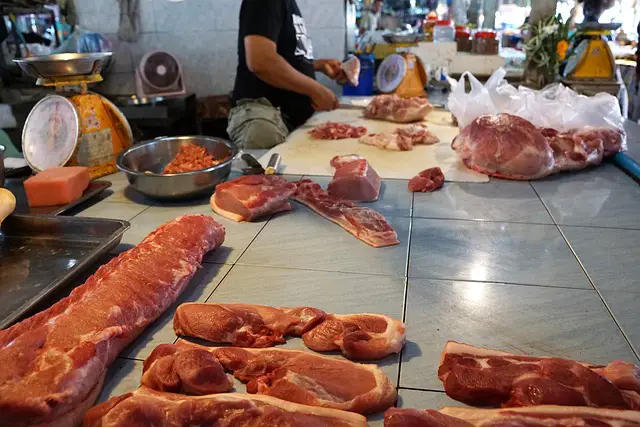
Most of the success comes from your setup. You need the right sized cutting boards, water sources, places to sit knives when they are not in use. All of this should ideally be close to the place where you are hanging an animal or have large tables to deal with large cuts of meat.
The ideal setup is also going to have a table for wrapping meat and then a place to store it to immediately drop the temperature.
Time and Temperature
The biggest spoiler of meat during the butchering process is the time and temperature. Time and temperature abuse is a food safety concern in every aspect of food preparation and food service all over the world.
You do not want your meat to be in the temperature danger zone for more than a couple hours or it can greatly reduce the shelf life of the meat.
Slaughter and Bleeding
If you are going to butcher an animal, chances are you will do the slaughter, gutting, and bleeding of that animal. This is another skillset, but it is one that you should learn and hope to master. If you rupture a stomach or intestine or bladder while gutting your animal there is a good chance that some or all that meat is going to be spoiled.
Killing or slaughtering is as much a mental challenge for the modern person as it is a physical and skill based one. While you might assume you can kill an animal without issue, an animal that you have been seeing and raising for 6 months, you might be surprised.
The most common way to bleed an animal is to cut the jugular vein. Hanging the animal upside down can help with the bleeding process but I find that gutting is better with the animal hanging upright.
Feathers and Hair
Before you start the butchering process, you are going to need to deal with either hair or feathers on an animal. Both must come off if you are going to take full advantage of the meat on that animal. Feathers can be plucked, or the bird scalded in hot water.
Hair on pigs can be scalded and scrubbed or it can be singed and scraped. This can be a big job on its own so be prepared. You will need some kind of torch if you are going to singe the hair.
Another method is to completely skin the animal or fowl completely and then you need not worry about the feathers or hair. The trouble with that is skin gets so nice and crispy and when it is salted and crisp there is almost nothing like it!
Anatomy and Joints
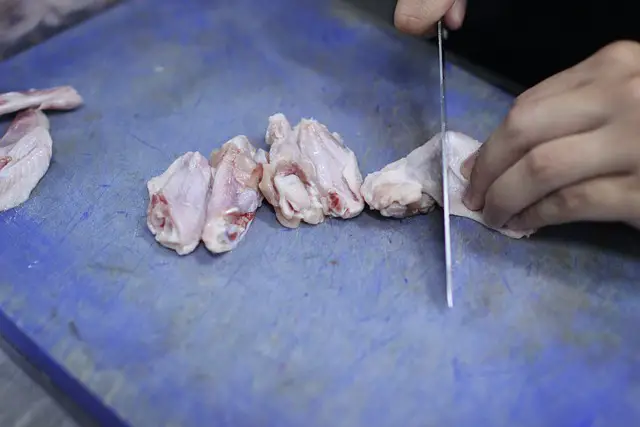
The breaking down of animals and butchering requires a rudimentaryunderstanding of the anatomy of an animal. So much can be achieved by just finding and cutting through joints.
The best way to understand how to find and manage joints during butchering is to buy yourself a cheap whole chicken and break that bird down.
- Start with the legs of the bird. Spread one very wide and you will begin to see the ball that goes into the socket of the hip. Keep spreading and that socket may pop on its own or you may just slice through where they meet with your boning knife.
- Once you have a leg separated from the body you can look at the next joint. This is where the leg bones meet at the knee. Looking at this from the meat side you will even see a little line of fat that shows you where the joint is. Once again, with a sharp knife you can separate the thigh and the drumstick.
- Now you can move to the wings. Wing tips give way to a joint that connects to the two boneradius and ulna of the bird, just likes ours. Cut where that joint is to remove the wing tip. The next joint is effectively the elbow that gives way to the humorous of the chicken. Cut here and part of your wing is removed.
- The humorousis attached to the small scapula or wishbone of the bird. Cut at the joint to remove that.
- Now you can trim breast meat from the breast bone and you have basically broken down a chicken to its useable parts.
I would recommend saving the carcass to roast in the oven and use for stock.
What’s most important is that you understand that all animals have very similar joints and bones. If you can find the joint then you can separate it and break the animal down. A very minimal understanding of anatomy will help.
When breaking down something like a pig, lamb, goat, or cow, you will also need to understand where the loin, ribs, side meat (or belly), picnic, shoulder, ham, and maybe even jowls are located as they will give you a variety of options when butchering.
Don’t forget to save as much fat as possible from your animal for rendering.
Wrapping Up the Meat
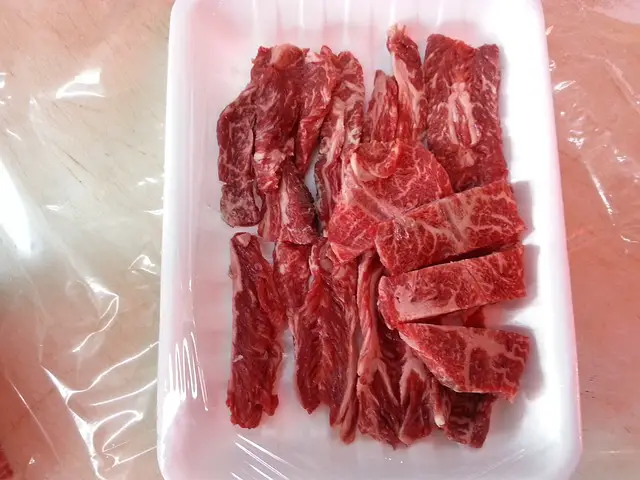
The final step is how you decide to store your meat. It is true that some of your meat can be salted or preserved but the majority will need to be packaged and frozen. Deciding on that process ahead of time will really help you prepare.
You do not wanna run out of plastic wrap halfway through a big animal. You might opt to vacuum seal or use another method entirely. The choice is yours. Just make sure you have a table, coolers, and all the resources needed to start and finish the job.
Conclusion
To raise and feed an animal to the point of slaughter is a serious investment. This is an investment of time and money that you are expecting an ROI on, to some degree. The butchering process is where you get that return.
Make sure you are fully prepared on butchering day. If you are not up to the task, then you need to move the butchering day. This is where you want all your effort and attention. Meat lost is money and time lost.
Like this post? Don't Forget to Pin It On Pinterest!
You May Also Like:



